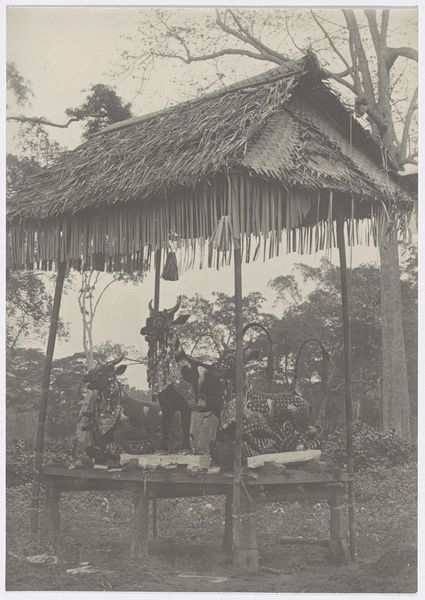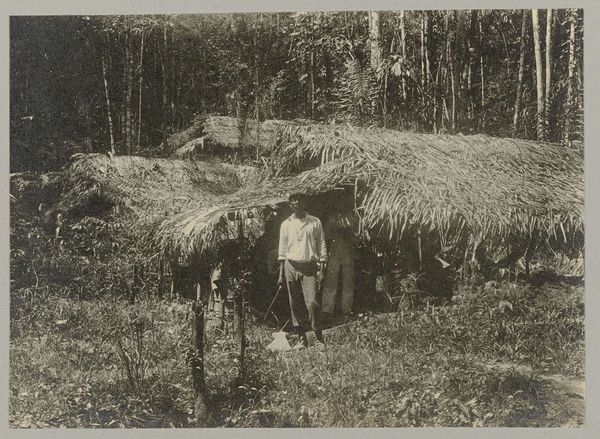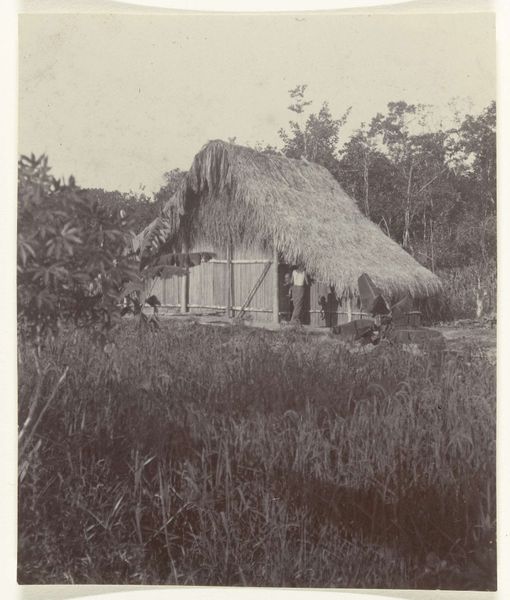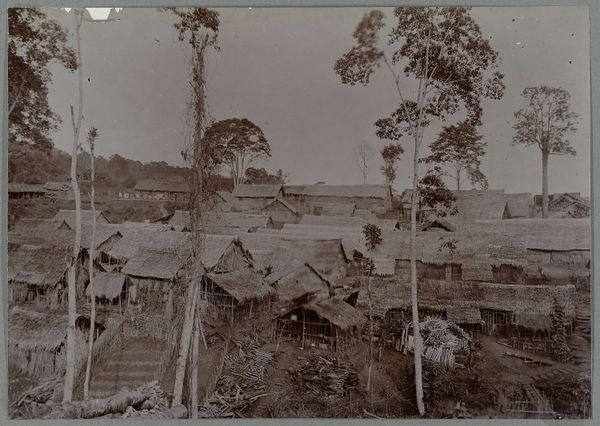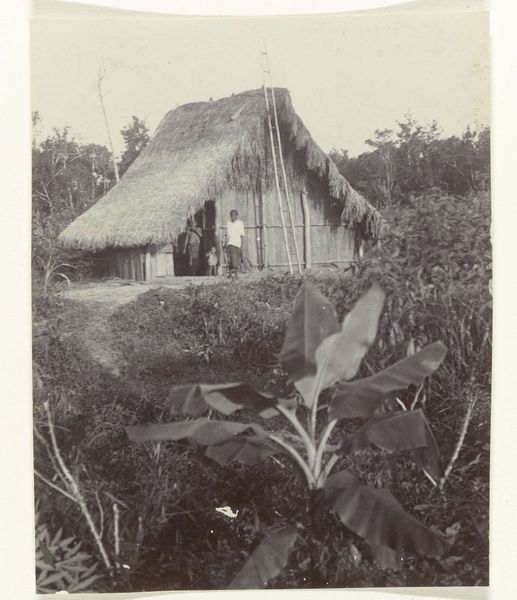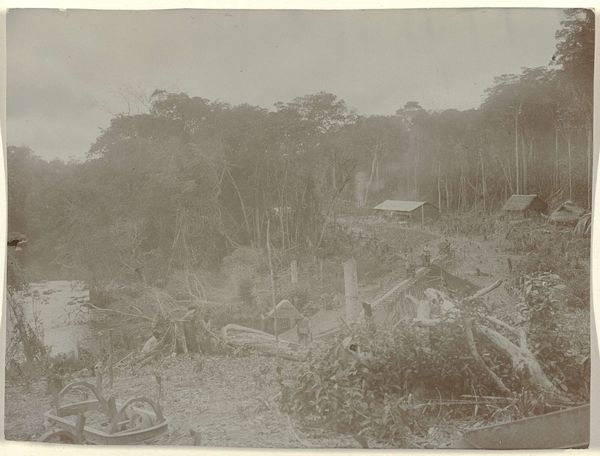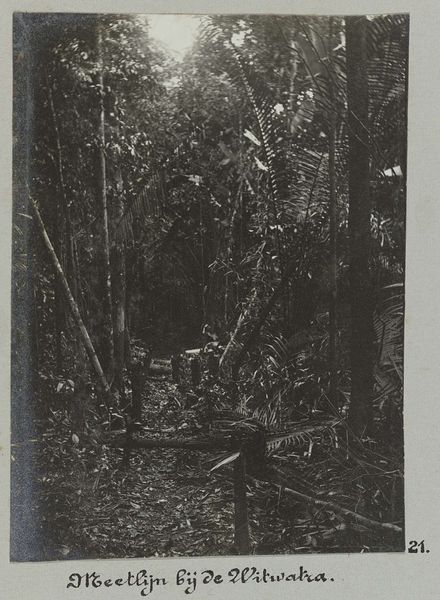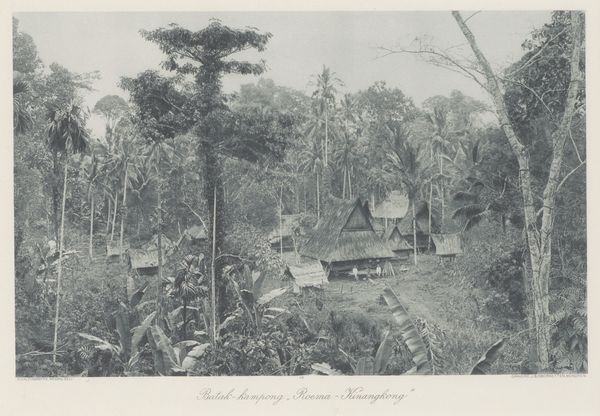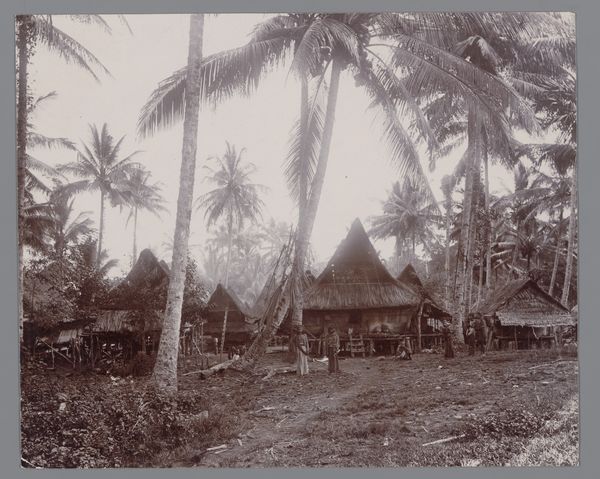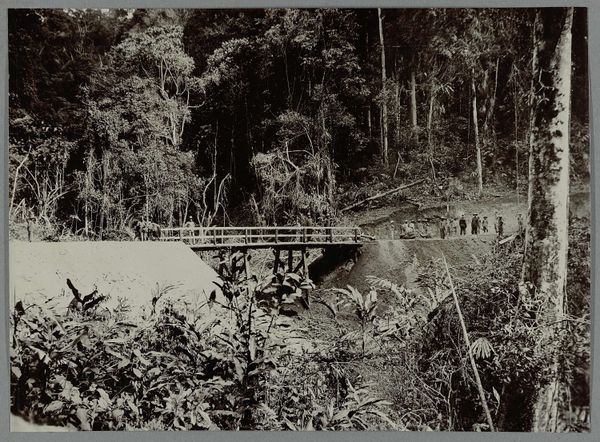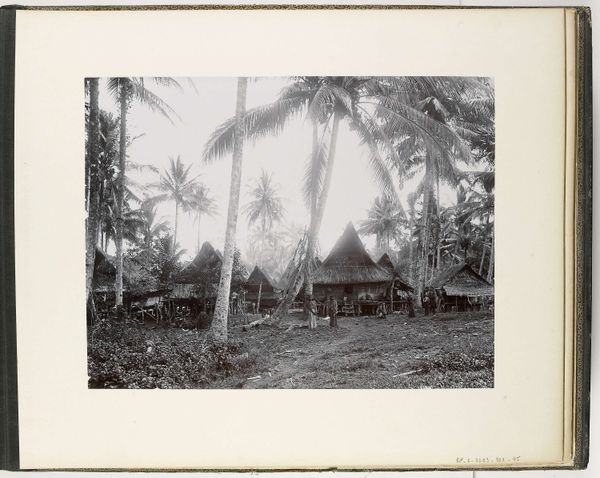
plein-air, photography
#
african-art
#
plein-air
#
landscape
#
photography
#
photojournalism
#
monochrome
Dimensions: height 110 mm, width 80 mm
Copyright: Rijks Museum: Open Domain
Editor: Here we have Hendrik Doijer's photograph, "Gouddelverskamp aan den voet van den Brownsberg," taken sometime between 1903 and 1910. It’s a black and white image, seemingly a landscape, though dominated by this modest shelter. There's something almost... precarious about it. What story do you think this photograph is telling? Curator: This image presents us with a complex colonial narrative. We see not just a landscape, but the imposition of human activity upon it, specifically, a gold mining camp. Consider how this photo might have been circulated – likely intended for a European audience. How do you think it functions in shaping perceptions of Suriname and its resources? Editor: That's interesting, I hadn't thought of it that way. So the choice of what to show, and what not to show, is critical to its message? Curator: Precisely. The "documentary" aspect can be misleading. This image elides the larger social and ecological impacts of gold mining, instead presenting a simplified, perhaps romanticized, view of resource extraction in a colonial context. Who is profiting? Where is the gold going? These questions are absent. It’s also presented in a form suitable for framing. Editor: So it becomes a commodity itself, reinforcing that relationship... I now realize there is much more in play than meets the eye at first glance. It definitely casts a new light on my initial reaction to the photograph. Curator: Exactly. These photographs played a crucial role in constructing and maintaining colonial power dynamics. Thinking about them critically allows us to unpack those historical forces. Editor: Thank you. I'm definitely taking away a much deeper understanding of how seemingly simple images can carry complex socio-political weight.
Comments
No comments
Be the first to comment and join the conversation on the ultimate creative platform.
